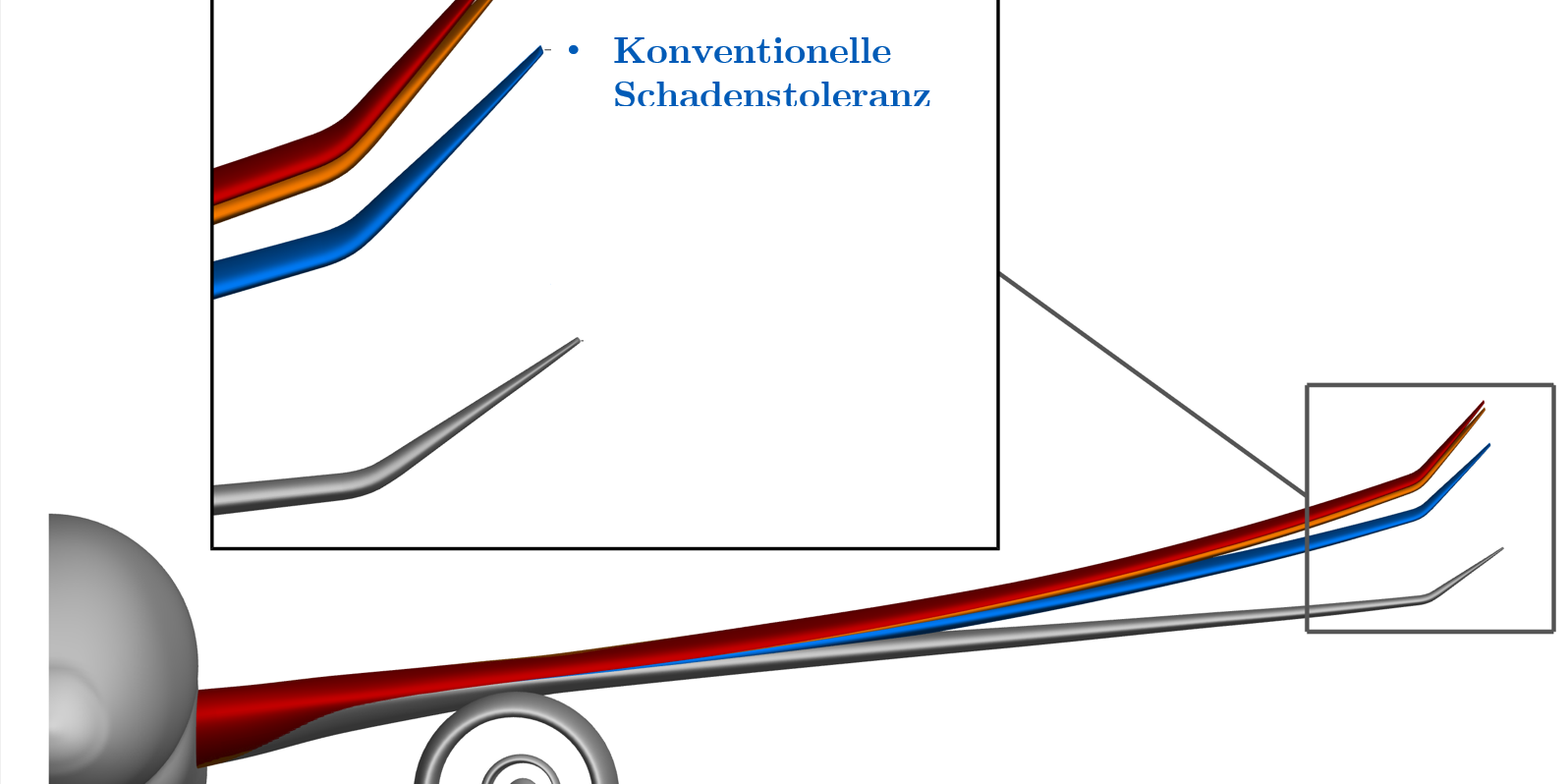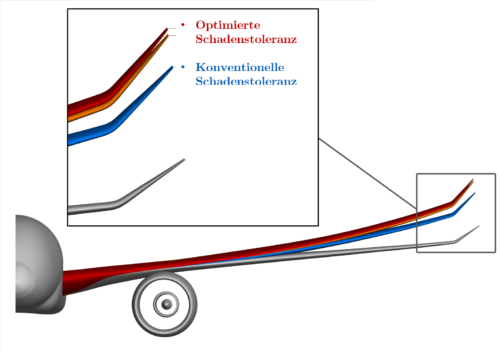The safety and efficiency of aeroplanes depend to a large extent on the resilience of their structures. Damage cannot be prevented during the operational life of an aircraft. The best possible methods for damage assessment are therefore essential. In order to utilise the lightweight construction potential of CFRP as well as to ensure operational safety, new methods for damage assessment are required as part of structural design.
A comprehensive calculation method enables us to evaluate the damage tolerance in the early design phase and incorporate it into the design process as developed at the Institute of Lightweight Structures. In contrast to conventional design methods, which restrict the design space to laminates that have been tested in advance, this method promises an individual calculation of the damage tolerance for any laminate configuration. We are therefore not only working on improving safety, but also on reducing the structural mass and the resulting fuel consumption.
From the laminate-specific residual strength to the limit value for structural optimisation.
The basis of this method is a detailed damage analysis, which is used to determine the relevant damage parameter for CFRP laminates on a laminate-specific basis. In addition to the damage itself, the associated influence on the structural-mechanical properties of the laminate differs from laminate to laminate – in particular, the assessment of the visibility and the residual load-bearing capacity are required here.
A particular challenge is the derivation of general design limits once the laminate-specific residual load-bearing capacities are known. For this purpose, we analyse the damage scenarios of various laminates in a multi-stage process. The aim of the process is to minimise the impact of the damage while determining the most critical possible case in the entirety of the laminates in the design space. The exact prediction of the damage size depends largely on the crack resistance of the matrix material and the layering of the multidirectional ply structure.Nevertheless, the validity of the method is ensured for each configuration of these parameters. The prediction accuracy of the method was verified by comparison with existing experimental data.
Direct influence of the limit value on the structural mass
This development has far-reaching implications for the early phase of aircraft design. A more precise determination of the damage tolerance enables engineers to design lighter yet safer aircraft. By optimising a wing structure, taking into account the individual damage tolerance calculation, a mass reduction of 5% and a reduction in fuel consumption of around 1.4% could be achieved. The research was carried out in close co-operation between different aircraft design disciplines to ensure that the method meets practical requirements.
The next step in the further development of this method is to extend it to a wider range of use cases so that the existing lightweight potential can be utilised in all structural regions.









